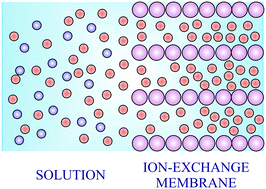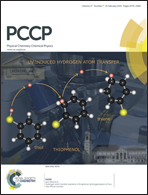Theory of the formation of the electric double layer at the ion exchange membrane–solution interface
Abstract
This work aims to extend the study of the formation of the electric double layer at the interface defined by a solution and an ion-exchange membrane on the basis of the Nernst–Planck and Poisson equations, including different values of the counter-ion diffusion coefficient and the dielectric constant in the solution and membrane phases. The network simulation method is used to obtain the time evolution of the electric potential, the displacement electric vector, the electric charge density and the ionic concentrations at the interface between a binary electrolyte solution and a cation-exchange membrane with total co-ion exclusion. The numerical results for the temporal evolution of the interfacial electric potential and the surface electric charge are compared with analytical solutions derived in the limit of the shortest times by considering the Poisson equation for a simple cationic diffusion process. The steady-state results are justified from the Gouy–Chapman theory for the diffuse double layer in the limits of similar and high bathing ionic concentrations with respect to the fixed-charge concentration inside the membrane. Interesting new physical insights arise from the interpretation of the process of the formation of the electric double layer at the ion exchange membrane–solution interface on the basis of a membrane model with total co-ion exclusion.


 Please wait while we load your content...
Please wait while we load your content...